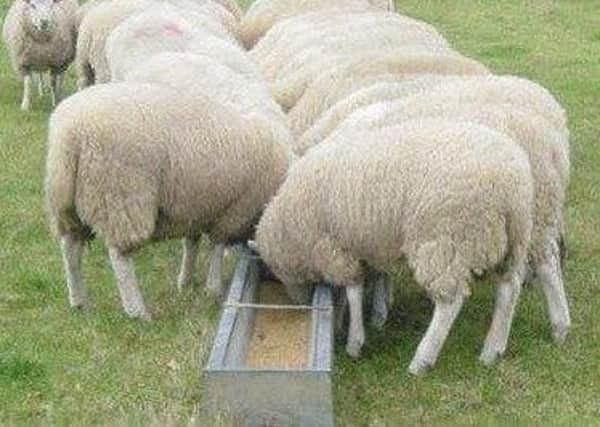DAERA Management Notes: Beef and sheep


Three pieces of information are needed to answer the above question. They are:
* What are they worth as stores today?
* What are they worth finished?
* How much it will cost to finish them?
The difference in weight and value of a store and finished lamb is often about 16kg and £30 depending on prices. Based on these figures, if the cost per kilogramme gain is below £1.87 a margin is created. The highest margin can be achieved at grass as lambs can gain between 80 and 130g per day depending on sward quality, with a cost of 45-70p per kilogramme gain. However prolonged wet spells and poor weather will reduce gains dramatically and increase time to slaughter. The effect this will have on early spring grass must also be considered. Dosing for worms and fluke is essential and must be carried out before moving the lambs to the grazing areas. Vaccinate for clostridial diseases (4 in 1 vaccine) particularly if you do not know the vaccination history of the lambs and if the finishing period is longer.
Advertisement
Hide AdAdvertisement
Hide AdThe other option is creep feeding but concentrate cost has a massive effect on margin. Intensive finishing indoors often works out cheaper than winter grazing with creep feeding due to the increased performance indoors. Based on a feed conversion ratio of 7-8:1, indoor finishing can cost 120-180p per kilogramme gain depending on ration price. Often a simple balanced meal using good quality straights creates a reasonable margin. Roughage is needed for good rumen function and never feed ewe minerals to lambs. Take account of vet costs and the possibility of mortality over the finishing period.
Tupping
Maintain ewe condition during the tupping period and for four weeks after conception. If ewe condition deteriorates during this period embryo loss and reabsorption can occur. Feeding a small amount of a cereal based ration (0.25kg per head per day) during tupping may be needed if grass supply is inadequate or ewes are in poorer condition. A stress free period also ensures maximum embryo survival. Carry out all work with sheep, including vaccinations/dosing, three weeks before the mating period begins. There should be minimal disturbance of the flock for one month (two cycles). Using a ram raddle for mating provides very useful information about individual rams. Rotating rams after the first and second cycle helps reduce the impact of any sub-fertile rams. Change the raddle colour every 14 days, starting with lighter colours first.
SUCKLER COWS
Before housing or as soon as possible pregnancy diagnose your spring calvers, while running your hand over cows to assess body condition score. As fodder shortage may be an issue this year now is the best time to ‘off-load’ barren cows. If possible batch your cows according to calving date and body condition as it is nearly impossible to improve cows in poorer condition without others putting on too much condition if they are all housed in the one pen.
Silage assessment
Getting your silage analysed now may be the best £20 you spend this winter! Calculate what silage is needed and how much you have. With fodder stocks low in parts of the country this year managing feeding accurately from the start is important. Currently soya hulls and maize gluten are good value and 1.0kg (3:1) fed can replace 5kg silage for suckler cows (neutral cost difference if silage is valued at £25/tonne).
Closed spreading periods
Advertisement
Hide AdAdvertisement
Hide AdAt this stage the window for applications of chemical nitrogen and phosphate fertiliser on grassland is closed. Organic manures, including slurry, poultry litter, digestate, sewage sludge, anaerobic digestate and abattoir waste, must not be applied to any land from midnight 15th October to midnight 31st January. Farmyard manure (FYM) must not be applied to any land from midnight 31st October to midnight 31st January. Remember to keep a record of exports of organic manures as these must be submitted annually to NIEA, by 31st January for the previous calendar year.